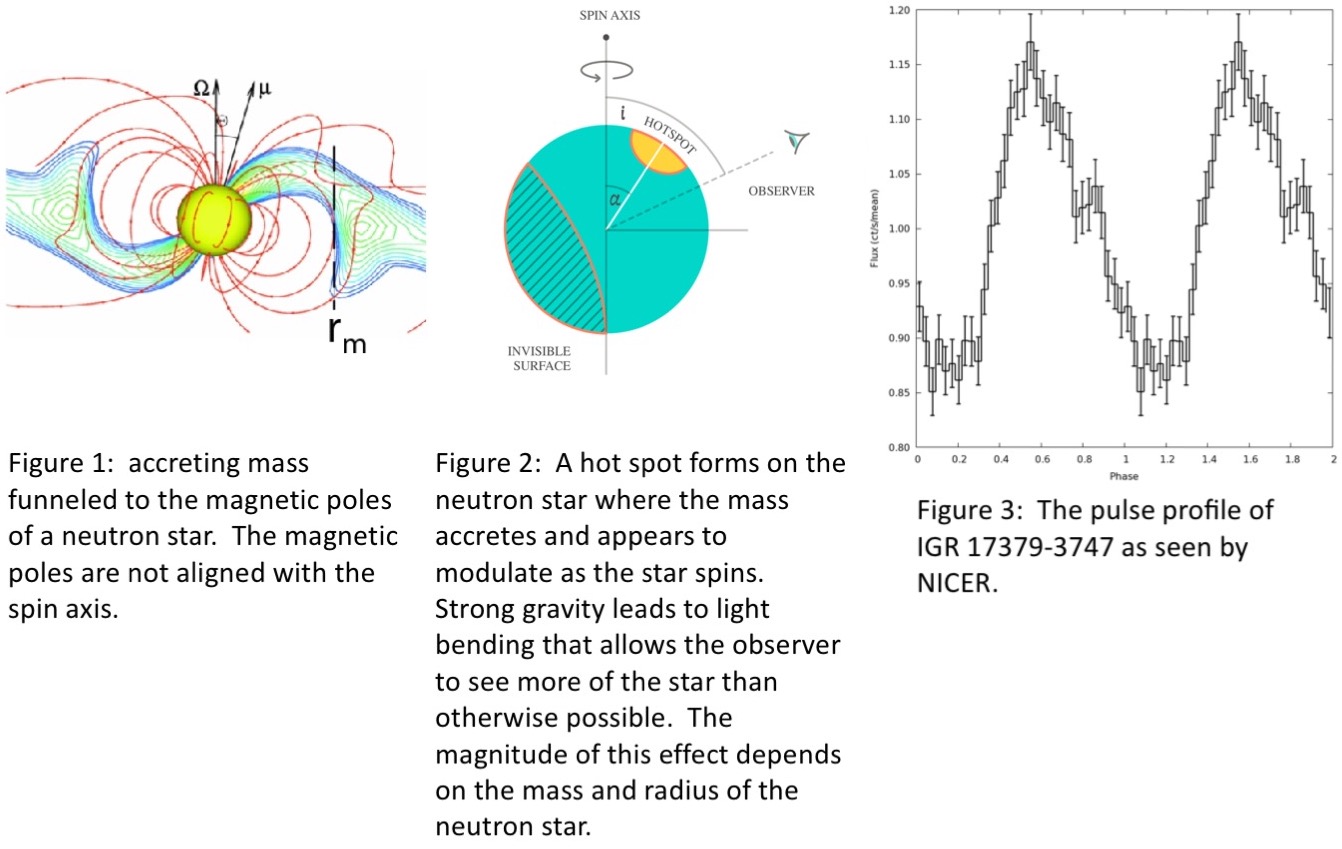NICER / ISS Science Nugget for May 9, 2019IGR 17379-3747's large magnetic axis inclinationIn an accreting millisecond pulsar the neutron star magnetic field channels in-falling matter to the stellar magnetic poles (figure 1). The impact of this accretion flow heats a confined region on the stellar surface - the hot spot - that is much brighter than its surroundings. As the star rotates, the fraction of this hot spot visible to the observer varies, causing an apparent oscillation in the intensity at the rotation period of the neutron star. The precise shape of the pulsar waveform depends on the orientation of the neutron star relative to the observer and on a number of physical processes, including gravitational light-bending and relativistic Doppler boosting (figure 2). These relativistic effects, in turn, depend on the neutron star composition, specifically its mass and radius. Modeling the pulse profile therefore gives a method to measure the neutron star mass and radius. How accurately we can do this, however, depends in part on how well we know the specific orientation of the neutron star. Our recently accepted paper on IGR 17379-3747 demonstrated that the pulse waveform (figure 3) of this neutron star has extremely unusual properties, suggesting that the angle between the spin and magnetic axes is large. This is a boon to waveform modeling as it significantly narrows down the possible orientations of the star, thereby reducing the uncertainty in our mass and radius measurements. An added benefit is that the degree of relativistic distortion scales with the misalignment angle, so we can expect these effects to be comparatively prominent in this accreting millisecond pulsar. NICER
|



